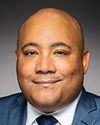Thank you, Shelley. That was well said.
Good afternoon. My name is Cathy Murphy, and I'm the chairperson at the Child and Youth Permanency Council of Canada.
I worked in child welfare and social services for just over 35 years and retired in this past year. I've had the true privilege of working with adoptive families, kinship caregivers and customary caregivers right across Canada, but most importantly today, I am an adoptive parent. My children, who are now young adults, continue to teach me every day why time to attach is so important for every permanency family in Canada.
There was a time not so long ago when our children—my son, now 32, and my daughter, now 27 years of age—joined our family through adoption. Our son lived in the child welfare system, and our daughter was adopted from China. Our family has had experience with both public adoption and international adoption. Each of our children has their own unique strengths and their own unique challenges.
Our son had six placements in the child welfare system before he joined our family as a preschooler. We now know that he is living with fetal alcohol spectrum disorder. We had no idea at the time. His experiences in his earlier life taught him that the world was not a safe or predictable place, and he had difficulty trusting. Our daughter had two placements—with her first family and foster family, and then with the orphanage—before she joined our family at one year of age.
When our son first came to us, we were introduced to him as “Mommy Cathy” and “Daddy Jim”. My husband is a fire chief here in Ottawa, and for any of you who know little boys and little girls, they love firefighters. My son was no different. He adored his daddy from day one.
I did not become “Mommy Cathy”. I was, “Hey lady” out of the side of his mouth for many years. “Hey lady” was the response I would get if I asked him to do something or if I tried to play with him. “Hey lady” was where I was told to sit, which was outside our kitchen, outside our dining room at dinnertime.
Three and a half years after our son joined our family, it was at bath-time one night, and we had been going through the same consistent routine every night. He loved Batman figures and all things comic book, and he had them all in the bathtub with him that night. He looked up and said, “Hmm. You a very, very good mama. Did you know that?” It still breaks my heart to this day because it took him three and a half years to say the word “mama”.
He is now 32 and has lived through some incredible times, as has our family, but I can tell you that not for one single moment have I ever regretted that connection or the incredible commitment that comes with being adoptive parents. What I know first-hand is what they need to be successful and strong and to be survivors, and what our kids need as well.
I have truly had the honour of working with thousands of adoptive families: kinships, which are just extended grandparents, and perhaps aunties and uncles; and customary caregivers, which are indigenous families across Canada. I've learned that every child and youth I met needed time to adapt and to adjust to their new setting and family before the attachment process could even begin.
Many children and youth, just like my son, have learned to mistrust. Their worlds were not safe and not predictable, and their caregivers let them down time and time again. They formed anxious attachments or, in the case of my son, may have had difficulty forming any attachment at all because of the many caregivers they've had in their lives and the developmental trauma they may have experienced.
We can build trust by meeting our children and youth where they are, by showing up for them over and over again, by smiling even when you're called “Hey lady” and by celebrating when, three and a half years later, you're finally called “mama”. Then very slowly, they may begin to realize that we are dependable, that we are reliable and that we might—and I emphasize might—be worthy of their trust. The attachment process begins with trepidation, and guess what. It doesn't ever end. It's tested many times over the weeks, months and years to come, because they learned at a very early age that the world is not a safe place.
Every permanency family, whether customary caregiver, kinship caregiver or adoptive parent, has their own unique circumstances. Some parents will have time to prepare for their child or youth to join their family. For others, it will happen very quickly, actually in the middle of the night or overnight, sometimes without warning because the circumstances are beyond the control of the child or youth. These families will need resources. They will need support. They will need connections. They will need to know that their government stands with them during some very trying and difficult times.
What is “time to attach”? It's an additional 15-week attachment leave for customary caregivers, kinship caregivers and adoptive parents. It's calling upon our Canadian government to treat all families equally and fairly—equitable treatment.
Truth be told, the children and youth in my house and the children and youth I've had the privilege of working with need much more than an additional 15-week attachment leave, but by delivering on this attachment leave promise, the Government of Canada would be standing up for families who are supporting the needs of these children and youth, and yes, this is not insignificant.
In Canada, there are approximately 30,000 children and youth living in our child welfare system. Each year, approximately 1,700 of those children and youth find permanency families. Youth are aging out of our child welfare system at an alarming rate, and without permanency, their outcomes are not good. We all need to care about and advocate for the children and youth living in our child welfare system.
We also need to acknowledge that more than half of those children and youth are African Canadian and indigenous. Less than 0.3% of all Canadians have spent time in the child welfare system—less than 0.3%—but more than 65% of all unhoused Canadians have spent time in the child welfare system. Listen to that again: Less than 0.3% of all Canadians have ever spent time in the child welfare system, but more than 65% of all unhoused Canadians have spent time in the system.
We need to raise the age at which youth age out of the child welfare system—in every province and territory in Canada—and lower these statistics. We need to promote and support older child and youth adoptions in Canada and support different forms of permanency. Most children and youth in the system are over 10 years of age now, maybe in a sibling group, and maybe living with visible or invisible special needs. Our son was diagnosed with fetal alcohol spectrum disorder at the age of 12 and required a host of resources that we were more than happy to tap into in order for him to reach his highest potential.
Today, I'm advocating for time to attach, because it matters. It matters to the children and youth. It matters to their families.
Thank you very much.




